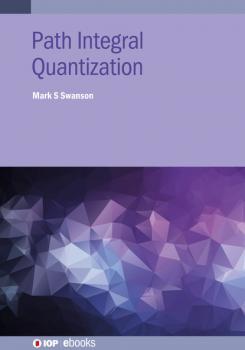Mark S Swanson
Список книг автора Mark S SwansonPath Integral Quantization
This book is a self-contained and concise introduction to the techniques and applications of path integral quantization and functional techniques, aimed at students and practitioners. The first half of the text focuses on quantum mechanics, including a review of the action formulation of classical mechanics and quantum mechanics in the Dirac operator and state formalism, and further examination of the path integral. The second part examines relativistic field theories, reviewing special relativity, as well as derivation of the path integral representation of the vacuum transition element for quantized scalar, spinor, and vector fields from the coherent state representation of the respective field theories. Key Features Concise introduction to the derivation and methods of path integral approaches to quantum mechanics and quantum field theory.Self-contained guide for students and practitioners
A Concise Introduction to Quantum Mechanics
Assuming a background in basic classical physics, multivariable calculus, and differential equations, A Concise Introduction to Quantum Mechanics provides a self-contained presentation of the mathematics and physics of quantum mechanics. The relevant aspects of classical mechanics and electrodynamics are reviewed, and the basic concepts of wave-particle duality are developed as a logical outgrowth of experiments involving blackbody radiation, the photoelectric effect, and electron diffraction. The Copenhagen interpretation of the wave function and its relation to the particle probability density is presented in conjunction with Fourier analysis and its generalization to function spaces. These concepts are combined to analyze the system consisting of a particle confined to a box, developing the probabilistic interpretation of observations and their associated expectation values. The Schrödinger equation is then derived by using these results and demanding both Galilean invariance of the probability density and Newtonian energy-momentum relations. The general properties of the Schrödinger equation and its solutions are analyzed, and the theory of observables is developed along with the associated Heisenberg uncertainty principle. Basic applications of wave mechanics are made to free wave packet spreading, barrier penetration, the simple harmonic oscillator, the Hydrogen atom, and an electric charge in a uniform magnetic field. In addition, Dirac notation, elements of Hilbert space theory, operator techniques, and matrix algebra are presented and used to analyze coherent states, the linear potential, two state oscillations, and electron diffraction. Applications are made to photon and electron spin and the addition of angular momentum, and direct product multiparticle states are used to formulate both the Pauli exclusion principle and quantum decoherence. The book concludes with an introduction to the rotation group and the general properties of angular momentum.

